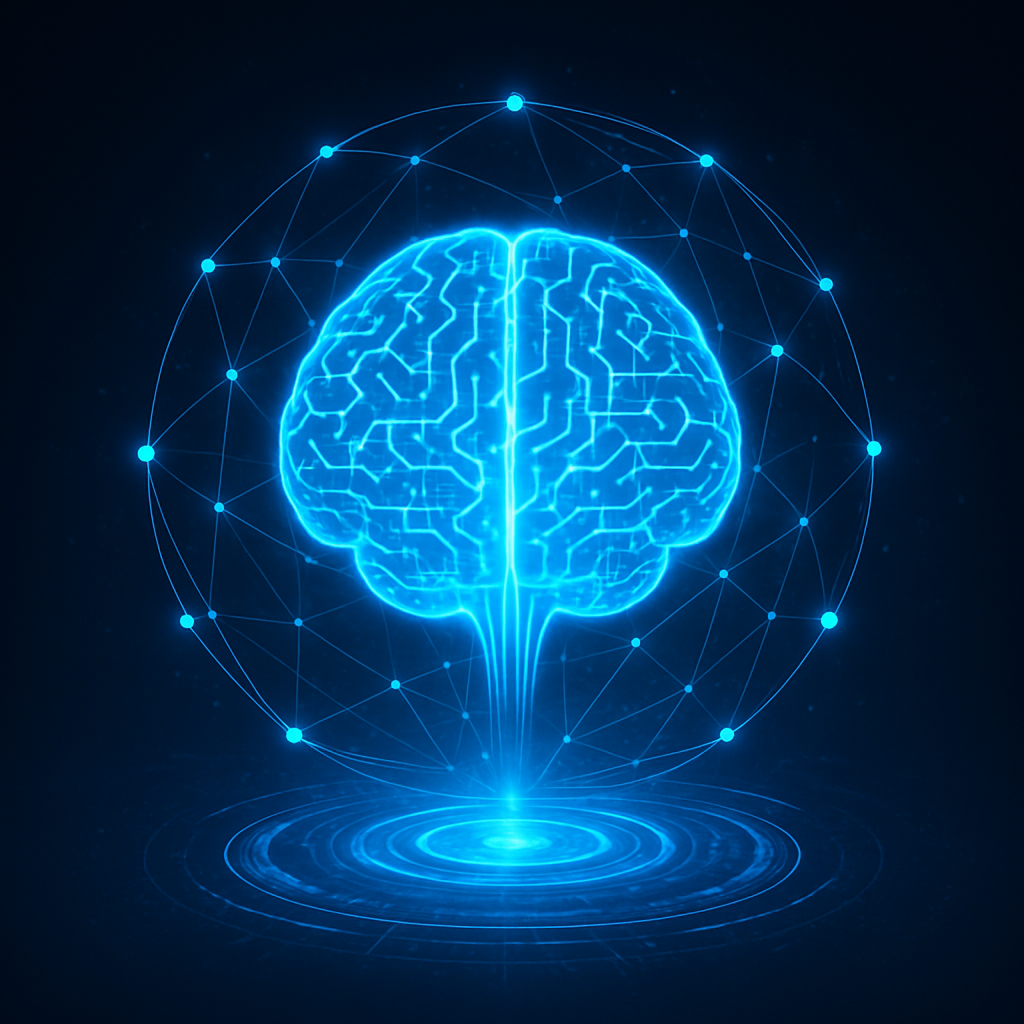Artificial Intelligence
Artificial Intelligence (AI): A Comprehensive Guide
Artificial Intelligence (AI) is a transformative branch of computer science concerned with building systems capable of performing tasks that typically require human intelligence. From simple automation to self-aware machines, AI has evolved into one of the most revolutionary technologies in modern history.
1. Definition of Artificial Intelligence
At its core, Artificial Intelligence refers to the simulation of human intelligence in machines programmed to think and learn. These machines can perform cognitive functions such as:
- Reasoning
- Problem-solving
- Understanding natural language
- Perception
- Learning from experience
2. A Brief History of AI
2.1. The Origins
- 1950: Alan Turing proposed the Turing Test in his paper "Computing Machinery and Intelligence", which asked: "Can machines think?"
- 1956: The term Artificial Intelligence was coined by John McCarthy during the Dartmouth Conference, considered the birth of AI as a field.
2.2. Early Development (1950s–70s)
- Researchers built programs that could play games (chess, checkers) or solve algebra problems.
- Limited computing power and data restricted AI’s capabilities.
2.3. AI Winters (1970s and 1980s)
- Repeated cycles of high expectations followed by failures led to loss of funding and interest—referred to as "AI winters."
2.4. The Rise of Machine Learning (1990s–2000s)
- Algorithms improved, and statistical methods like neural networks became popular.
- IBM’s Deep Blue defeated world chess champion Garry Kasparov in 1997.
2.5. Modern AI Revolution (2010–Present)
- Availability of big data, powerful GPUs, and advances in deep learning led to breakthroughs in:
- Computer vision
- Speech recognition
- Natural language processing (NLP)
- Notable systems: Google DeepMind’s AlphaGo, OpenAI’s GPT models, Tesla’s Autopilot, and more.
3. Types of AI
AI can be classified into several categories based on capabilities and functionalities:
3.1. Based on Capabilities
| Type | Description | Example |
|---|---|---|
| Narrow AI | Specialized for a single task | Siri, Google Translate |
| General AI | Human-level cognition and reasoning | (Still theoretical) |
| Super AI | Exceeds human intelligence | (Speculative future) |
3.2. Based on Functionalities
| Type | Description |
|---|---|
| Reactive Machines | No memory, respond to specific inputs (e.g., IBM’s Deep Blue) |
| Limited Memory | Learn from historical data (e.g., self-driving cars) |
| Theory of Mind | Understand human emotions and thoughts (still in research) |
| Self-Aware AI | Possesses consciousness (purely hypothetical as of now) |
4. Core Technologies Behind AI
4.1. Machine Learning (ML)
Enables machines to learn from data and improve over time without being explicitly programmed.
Types of ML:
- Supervised Learning: Labeled data (e.g., spam detection)
- Unsupervised Learning: Finds patterns in unlabeled data (e.g., clustering)
- Reinforcement Learning: Learns from rewards and punishments (e.g., game-playing AI)
4.2. Deep Learning
A subfield of ML using artificial neural networks with multiple layers (deep networks). Used in image recognition, language translation, etc.
4.3. Natural Language Processing (NLP)
Allows machines to understand, interpret, and generate human language. Applications include:
- Chatbots (like ChatGPT)
- Sentiment analysis
- Language translation
4.4. Computer Vision
Enables machines to understand visual inputs. Used in:
- Facial recognition
- Medical imaging
- Object detection in autonomous vehicles
4.5. Robotics
AI integrated into physical machines. Examples:
- Boston Dynamics robots
- Robotic arms in manufacturing
5. Real-World Applications of AI
5.1. Healthcare
- Disease diagnosis using imaging and data analysis
- Drug discovery and genomics
- Robotic surgeries
5.2. Finance
- Fraud detection
- Algorithmic trading
- Credit scoring
5.3. Transportation
- Self-driving cars
- Route optimization
- Traffic management
5.4. Retail and E-commerce
- Personalized recommendations
- Inventory management
- Virtual shopping assistants
5.5. Education
- Intelligent tutoring systems
- Automated grading
- Adaptive learning platforms
5.6. Entertainment
- Content recommendation (Netflix, YouTube)
- AI-generated music and art
- Game development
6. Advantages of AI
- Efficiency: Automates repetitive tasks
- Accuracy: Reduces human errors
- 24/7 Availability: Unlike human workers, machines do not tire
- Data Handling: Processes vast amounts of data in real-time
- Risk Reduction: Used in dangerous environments (space, deep sea, military)
7. Risks and Ethical Concerns
Despite its benefits, AI poses significant challenges:
7.1. Job Displacement
Automation may replace many jobs, particularly in transportation, manufacturing, and clerical work.
7.2. Bias and Fairness
AI systems can reflect and even amplify biases in the data they're trained on.
7.3. Privacy
Surveillance systems and data analysis can infringe on individual privacy.
7.4. Security Threats
AI can be weaponized or exploited by cybercriminals (deepfakes, autonomous drones, etc.).
7.5. Existential Risks
Highly advanced AI could, in theory, surpass human control—a concern raised by figures like Elon Musk and the late Stephen Hawking.
8. The Future of AI
8.1. Trends
- Explainable AI (XAI): Making AI decisions more transparent
- Edge AI: Running AI on devices (IoT, smartphones) without needing cloud computing
- AI & Quantum Computing: Potential for exponential processing power
- AI in Governance: Regulating AI development ethically and globally
8.2. Research Directions
- AGI (Artificial General Intelligence)
- Brain-computer interfaces
- Emotional AI
- Human-AI collaboration frameworks
9. Major Players in the AI Industry
- OpenAI (ChatGPT, Codex)
- Google DeepMind (AlphaFold, Gemini)
- IBM Watson
- Microsoft (Azure AI, partnership with OpenAI)
- Amazon (Alexa, AWS AI services)
- NVIDIA (AI chips, deep learning frameworks)
10. Conclusion
Artificial Intelligence is no longer science fiction—it's a reality reshaping our world. While the benefits of AI are vast and wide-ranging, so are the risks. Understanding both is critical as humanity navigates toward an AI-driven future. Responsible development, transparent governance, and ethical use will determine whether AI becomes humanity's greatest tool or its most dangerous challenge.



Comments
Post a Comment